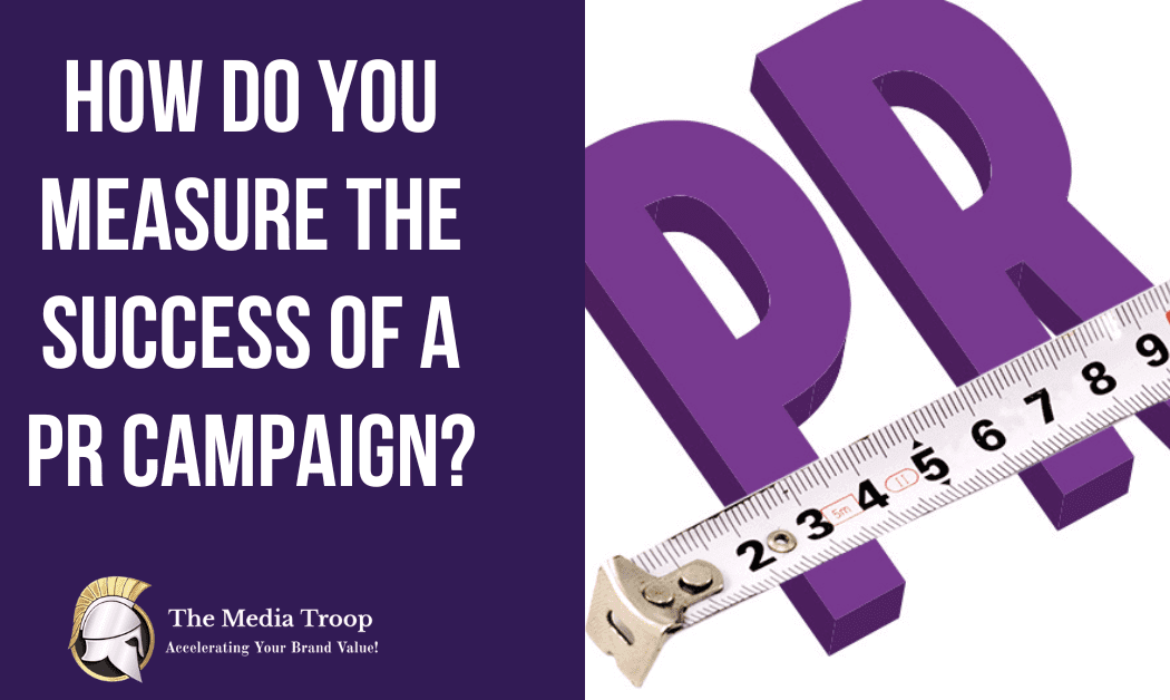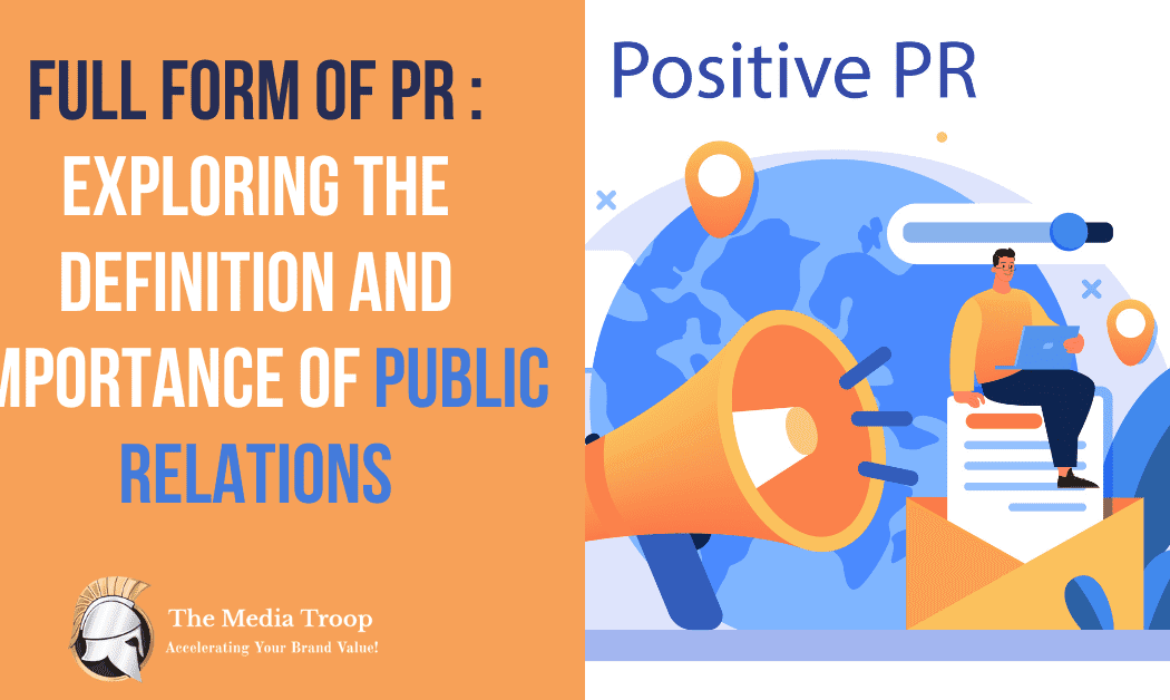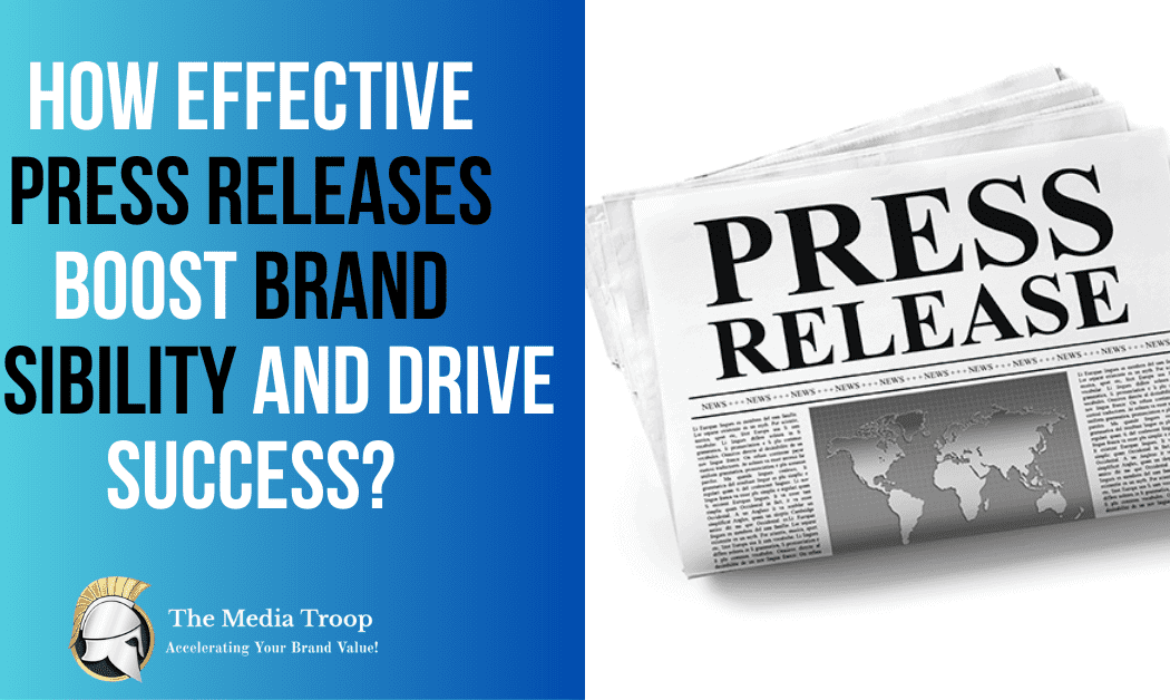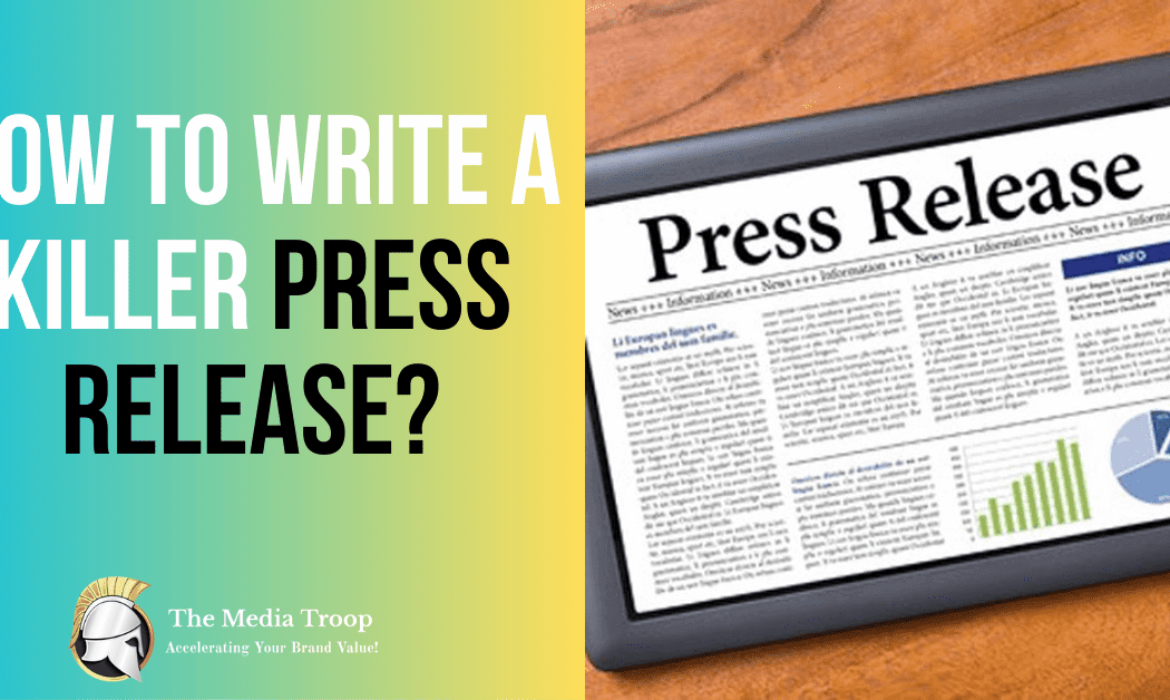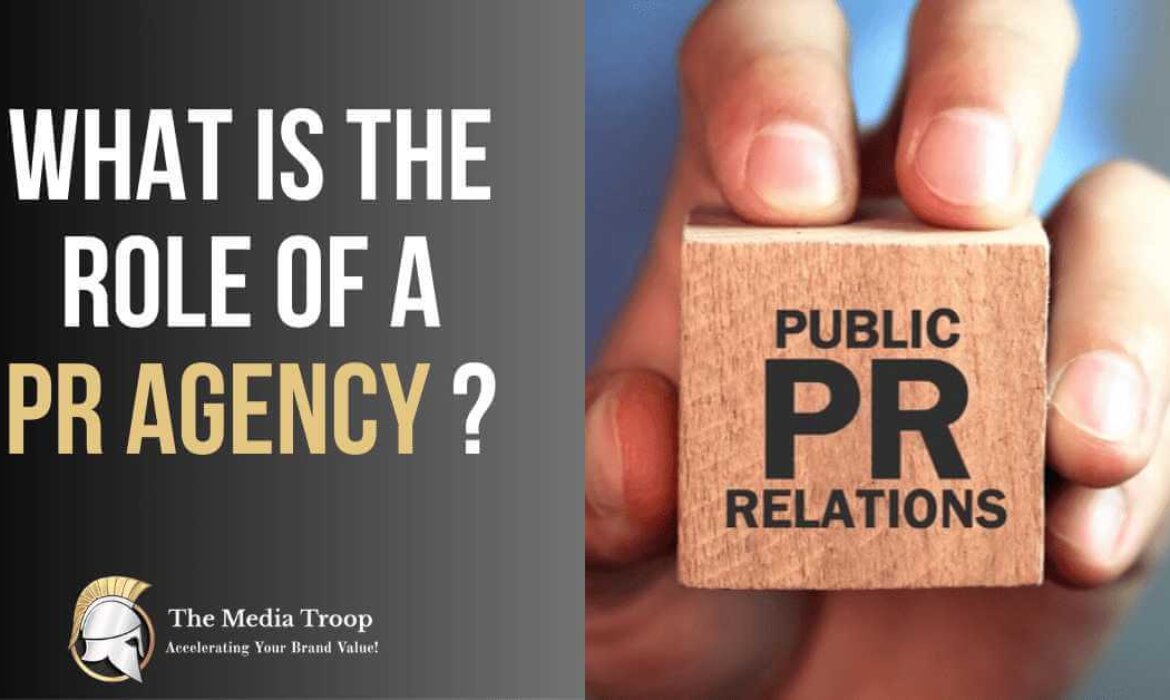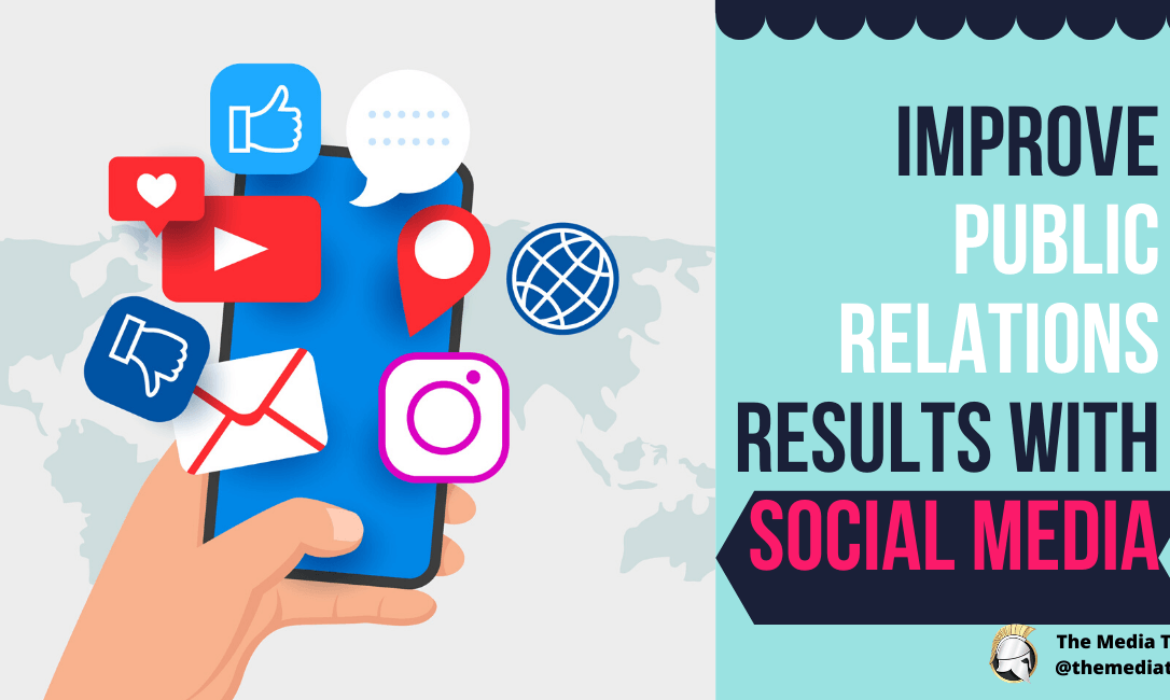The Importance of Press Conferences for Product or Service Launches
Launching a product or service in Pune, a vibrant and bustling city known for its thriving business ecosystem, requires a strategic approach to garner attention and create a buzz. Among the myriad of tactics available, Press conferences stand out as an indispensable tool for generating excitement, building credibility, and establishing a strong presence in the market. In this comprehensive guide, we delve into the pivotal role that press conferences play in the success of product or service launches in Pune.
Enhancing Visibility and Reach
Capturing Media Attention:
Press conferences serve as a platform to captivate the interest of media outlets, ranging from newspapers to digital publications, thereby amplifying the reach of your product or service launch. In Pune, where competition is fierce, garnering media coverage can significantly bolster visibility and brand recognition. As the Best Digital PR agency in Pune, we understand the importance of crafting compelling narratives and engaging story angles that resonate with journalists and capture the attention of their audiences.
Building Relationships with Journalists:
Establishing rapport with journalists and media personnel is crucial for securing favorable coverage and maintaining a positive reputation. By hosting a well-executed press conference, you not only showcase your offerings but also forge lasting relationships with key media figures in Pune, paving the way for future collaborations and endorsements. Our experienced team at [Your PR Agency in Pune] is adept at cultivating strong media relationships and crafting tailored pitches that resonate with journalists covering various beats.
Fostering Credibility and Trust
Demonstrating Expertise:
A meticulously planned press conference provides a platform to highlight the expertise and innovation behind your product or service. By delivering compelling presentations, engaging demonstrations, and insightful discussions, you position your brand as a trailblazer in its respective industry, instilling confidence and trust among consumers in Pune. As a leading provider of Press Conference Services in Pune, we specialize in curating impactful events that showcase your brand’s unique value proposition and establish you as a trusted authority in the market.
Garnering Endorsements and Testimonials:
Inviting industry experts, influencers, and satisfied customers to share their experiences and endorsements at the press conference adds a layer of authenticity and credibility to your launch event. Their testimonials serve as powerful social proof, persuading skeptical consumers in Pune to embrace your offerings with confidence. At [Your PR Agency in Pune], we leverage our extensive network of influencers and thought leaders to secure compelling endorsements and testimonials that resonate with your target audience.
Generating Buzz and Anticipation
Creating a Sense of Exclusivity:
Press conferences offer an opportunity to create a sense of exclusivity and anticipation surrounding your product or service launch. By inviting select journalists, influencers, and stakeholders to an exclusive unveiling event in Pune, you generate excitement and curiosity, driving demand and anticipation among target audiences. Our team specializes in orchestrating meticulously curated events that capture the imagination of attendees and generate buzz both online and offline.
Leveraging Social Media and Online Platforms:
Harnessing the power of social media platforms and online channels is paramount in today’s digital age. A well-publicized press conference in Pune, coupled with strategic social media campaigns and live updates, allows you to extend the reach of your launch event beyond physical boundaries, engaging audiences in real-time and fostering community engagement. As experts in digital PR, we employ cutting-edge strategies to amplify the impact of your press conference and ensure maximum visibility across all digital channels.
Establishing Thought Leadership and Authority
Positioning Your Brand as a Thought Leader:
Press conferences provide a platform to articulate your brand’s vision, values, and unique selling propositions, positioning your company as a thought leader and authority within the industry. By sharing insightful perspectives, market trends, and future projections, you demonstrate thought leadership and expertise, earning the respect and admiration of stakeholders in Pune. Our team of seasoned PR professionals specializes in crafting thought-provoking narratives and thought leadership initiatives that position your brand at the forefront of industry conversations.
Engaging in Thoughtful Q&A Sessions:
Incorporating interactive Q&A sessions into your press conference allows you to address concerns, clarify doubts, and engage in meaningful dialogue with attendees in Pune. By demonstrating transparency, responsiveness, and expertise, you foster trust and confidence in your brand, laying the foundation for long-term relationships and customer loyalty. At [Your PR Agency in Pune], we facilitate engaging Q&A sessions that foster open communication and enable you to connect with your audience on a deeper level.
Conclusion:
In conclusion, press conferences play a pivotal role in the success of product or service launches in Pune by enhancing visibility, fostering credibility, generating buzz, and establishing thought leadership. By leveraging the power of media relations, strategic communication, and digital marketing, you can maximize the impact of your launch event and propel your brand to new heights in the dynamic market landscape of Pune.
How do you measure the success of a PR campaign?
In today’s digital age, public relations (PR) campaigns play a crucial role in building brand awareness, managing reputation, and influencing public perception. However, determining the success of a PR campaign can be challenging without proper measurement and evaluation. This article explores various metrics and strategies to measure the effectiveness of a PR campaign and evaluate its impact.
Defining Success in PR Campaigns
Before diving into measurement techniques, it is important to define what success means for a PR campaign. Success in PR can vary depending on the campaign objectives and the organization’s goals. It can include increasing media coverage, improving brand sentiment, driving website traffic, generating leads, or enhancing customer engagement. By establishing clear and measurable objectives, you can effectively evaluate the success of your PR efforts.
Setting Clear Objectives
The first step in measuring the success of a PR campaign is setting clear objectives. Objectives should be specific, measurable, attainable, relevant, and time-bound (SMART). For example, an objective could be to increase media mentions by 20% within three months or to achieve a 15% increase in website traffic from PR referral sources. Clear objectives provide a benchmark for evaluation and help determine the effectiveness of the campaign.
Tracking Media Mentions and Reach
One way to measure the impact of a PR campaign is by tracking media mentions and reach. Monitoring online and offline media coverage can provide insights into the campaign’s visibility and exposure. Tools like media monitoring services and social listening platforms can help track and analyze mentions in newspapers, magazines, blogs, and social media. By tracking media reach, you can assess the campaign’s effectiveness in gaining media attention and reaching the target audience.
Analyzing Social Media Engagement
In today’s digital landscape, social media plays a vital role in PR campaigns. Measuring social media engagement can provide valuable insights into the success of your PR efforts. Key metrics to consider include likes, shares, comments, retweets, and follower growth. Analyzing social media engagement allows you to gauge the level of audience interaction, the reach of your messages, and the overall impact of your campaign on social platforms.
Monitoring Website Traffic and Conversions
Another essential aspect of measuring PR campaign success is monitoring website traffic and conversions. By using web analytics tools such as Google Analytics, you can track the traffic driven to your website from PR-related sources. Analyze the number of visits, page views, bounce rate, and time spent on the website to assess the effectiveness of your PR efforts. Additionally, track conversions such as newsletter sign-ups, downloads, or purchases to determine the campaign’s impact on driving user actions.
Measuring Brand Sentiment
Brand sentiment refers to the overall attitude and perception of your brand among the target audience. Measuring brand sentiment is crucial to understanding how your PR campaign is influencing public opinion. Online sentiment analysis tools can help analyze mentions and conversations related to your brand
, providing insights into positive, neutral, or negative sentiments. By monitoring brand sentiment, you can assess the success of your PR efforts in shaping the desired brand perception.
Evaluating Influencer Engagement
Influencer marketing has become an integral part of PR campaigns. When working with influencers, it’s important to measure their engagement and the impact they have on your campaign. Track metrics such as reach, engagement rate, follower growth, and the alignment of their content with your campaign message. Evaluating influencer engagement helps determine the effectiveness of influencer partnerships and their contribution to the campaign’s success.
Assessing Customer Feedback
Customer feedback is a valuable source of information for evaluating the success of a PR campaign. Gather feedback through surveys, interviews, or social media listening. Assess customer sentiment, their perception of the campaign, and whether it influenced their opinion or behavior. Customer feedback provides insights into the campaign’s impact on the target audience and helps identify areas for improvement.
Calculating Return on Investment (ROI)
Measuring the return on investment (ROI) is essential for assessing the financial impact of a PR campaign. Calculate the total cost of the campaign, including expenses such as media outreach, content creation, and agency fees. Then, evaluate the outcomes, such as increased sales, website traffic, or lead generation. By comparing the costs and outcomes, you can determine the ROI and evaluate the campaign’s financial success.
Surveying Target Audiences
To gain a deeper understanding of the campaign’s impact, consider surveying your target audience. Conducting surveys allows you to gather specific feedback and opinions directly from the people you are targeting. Ask questions related to brand perception, message recall, or actions taken as a result of the campaign. Survey responses provide valuable qualitative data that complements other quantitative metrics.
Leveraging Key Performance Indicators (KPIs)
Key Performance Indicators (KPIs) are measurable values that indicate the success of specific objectives within a PR campaign. Identify relevant KPIs based on your campaign goals and track them regularly. Examples of PR KPIs include media impressions, social media engagement, website traffic, lead generation, or sentiment analysis. By monitoring KPIs, you can assess progress and make data-driven decisions to optimize your PR efforts.
Conducting Competitive Analysis
Evaluating your PR campaign’s success is not complete without considering the competitive landscape. Conduct a competitive analysis to benchmark your performance against industry peers or competitors. Compare metrics such as media coverage, social media engagement, website traffic, or brand sentiment. Understanding how your campaign measures up against others in the industry provides valuable insights and helps identify areas for improvement.
Utilizing PR Measurement Tools
Various tools and software are available to assist in measuring and analyzing PR campaign performance. These tools provide comprehensive data and analytics to evaluate media coverage, social media engagement, website traffic, and more. Some popular PR measurement tools include Meltwater, Cision, Google Analytics, Sprout Social, and Brandwatch. Utilize these tools to streamline the measurement process and gain actionable insights into your PR campaign’s success.
Conclusion
Measuring the success of a PR campaign is crucial for evaluating its impact and making informed decisions for future strategies. By setting clear objectives, tracking media mentions, analyzing social media engagement, monitoring website traffic, evaluating brand sentiment, and leveraging measurement tools, you can effectively assess the effectiveness of your PR efforts. Remember to adapt your measurement strategies based on the campaign goals, target audience, and industry benchmarks to gain meaningful insights.
Full Form of PR: Exploring the Definition and Importance of Public Relations
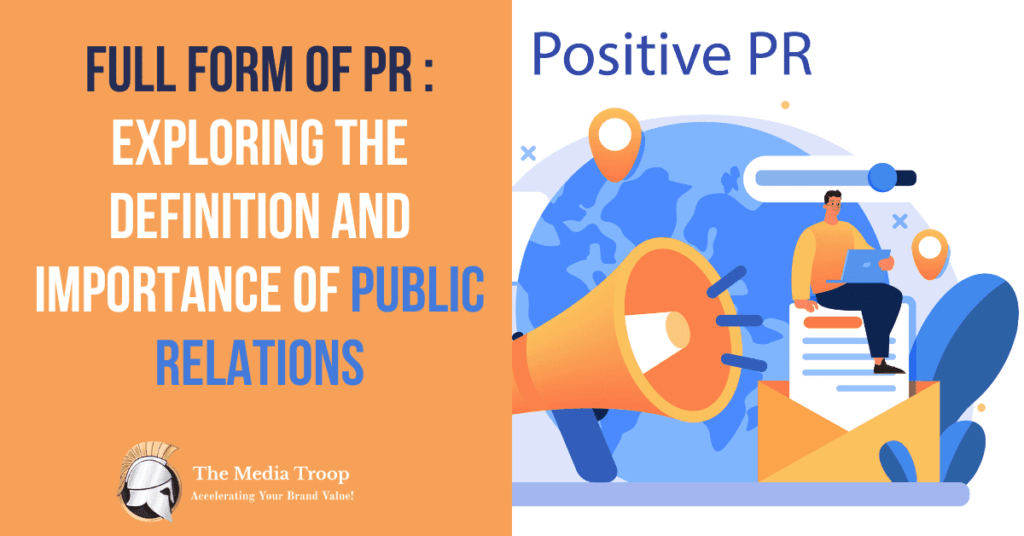
Public Relations (PR) plays a crucial role in shaping the image and reputation of individuals, organizations, and brands. It is an essential component of effective communication strategies, both online and offline. In this article, we will delve into the full form of PR and explore its significance in today’s interconnected world.
Table of Contents
- What is PR?
- The Evolution of Public Relations
- Key Objectives of PR
- PR Strategies and Tactics
- The Role of PR Professionals
- PR in the Digital Age
- PR Metrics and Measurement
- The Benefits of PR
- PR and Crisis Management
- PR vs. Advertising
- Ethical Considerations in PR
- PR and Brand Reputation
- Industry Examples of PR Success
- Future Trends in PR
- Conclusion
What is PR?
PR, or Public Relations, refers to the strategic management of relationships between organizations and their target audiences, with the aim of building a positive image, enhancing credibility, and establishing mutually beneficial connections. It involves the planned dissemination of information, managing perceptions, and engaging with stakeholders to influence public opinion and maintain goodwill.
The Evolution of Public Relations
Public Relations has a rich history that dates back to ancient civilizations. However, it gained significant prominence in the early 20th century when it became a distinct field of study and practice. Today, PR has evolved in tandem with technological advancements, embracing digital platforms and social media as powerful tools for communication and engagement.
Key Objectives of PR
The primary objectives of PR are to:
1. Build Awareness and Visibility
PR professionals strive to increase the visibility of their clients or organizations through targeted media coverage, events, and strategic partnerships. This helps in creating a positive perception and reaching a wider audience.
2. Manage Reputation
Maintaining a favorable reputation is crucial for any individual or organization. PR practitioners work to safeguard their clients’ reputations by monitoring public opinion, addressing issues promptly, and communicating transparently.
3. Enhance Credibility and Trust
PR endeavors to establish credibility and trust among stakeholders by positioning clients as industry leaders, subject matter experts, or trustworthy sources of information. This is achieved through thought leadership, media relations, and effective storytelling.
4. Foster Relationships
Building and nurturing relationships with key stakeholders, including customers, employees, investors, and the media, is a fundamental aspect of PR. These relationships form the foundation for positive engagement, collaborations, and support during crises.
PR Strategies and Tactics
Successful PR campaigns employ a range of strategies and tactics to achieve their goals. Some common techniques include:
1. Media Relations
Establishing and maintaining relationships with journalists, reporters, and media outlets to secure favorable coverage and share newsworthy stories.
2. Content Creation and Distribution
Crafting compelling and relevant content such as press releases, articles, blog posts, and social media updates to engage target audiences and generate interest.
3. Event Management
Organizing events, conferences, and seminars to create networking opportunities, showcase expertise, and generate media coverage.
4. Influencer Partnerships
Collaborating with influencers and industry experts to amplify messages, enhance credibility, and reach wider audiences through their established platforms.
The Role of PR Professionals
PR professionals are skilled communicators and strategists who act as liaisons between organizations and their stakeholders. Their responsibilities include:
- Developing PR strategies and campaigns
- Writing press releases and media pitches
- Managing media relationships
- Monitoring and analyzing media coverage
- Crisis management and reputation repair
- Providing strategic counsel to clients
- Conducting research and market analysis
- Measuring PR campaign effectiveness
PR in the Digital Age
The digital revolution has transformed the PR landscape, offering new channels and opportunities for communication and engagement. Online platforms, social media, and digital analytics enable PR professionals to reach target audiences more effectively, measure campaign impact in real-time, and engage in two-way conversations with stakeholders.
PR Metrics and Measurement
Measuring the success of PR efforts is crucial to evaluate effectiveness and make informed decisions. Common metrics include:
- Media mentions and reach
- Website traffic and referrals
- Social media engagement
- Brand sentiment analysis
- Share of voice in the media
- Conversion rates and lead generation
The Benefits of PR
Effective PR strategies can yield numerous benefits, including:
- Increased brand visibility and awareness
- Enhanced reputation and credibility
- Stronger relationships with stakeholders
- Improved customer trust and loyalty
- Crisis preparedness and management
- Increased sales and business growth
- Competitive advantage in the market
PR and Crisis Management
PR plays a vital role in managing and mitigating crises that can harm an organization’s reputation. Prompt and transparent communication, empathy, and strategic messaging are essential during crisis situations to rebuild trust and navigate through challenges.
PR vs. Advertising
While both PR and advertising aim to promote and communicate messages, they differ in their approaches. PR focuses on earned media coverage and building relationships, whereas advertising involves paid placements to deliver controlled messages. PR offers the advantage of credibility through third-party endorsements, while advertising allows for precise targeting and creative control.
Ethical Considerations in PR
Ethics form the foundation of responsible PR practices. Professionals must adhere to codes of conduct, ensure transparency in communication, respect privacy rights, and provide accurate information to maintain the integrity of their work.
PR and Brand Reputation
PR is closely intertwined with brand reputation. Building and safeguarding a positive reputation can lead to increased brand loyalty, customer retention, and a competitive edge in the market. PR strategies help shape public perception and create a favorable environment for brand growth.
Industry Examples of PR Success
Several industries have leveraged PR effectively to achieve their goals. For instance:
- Tech Giants: Companies like Apple and Google have mastered the art of PR by generating excitement and anticipation around their product launches through strategic media coverage and engaging storytelling.
- Fashion Brands: High-end fashion brands often collaborate with influencers, celebrities, and media outlets to create buzz and establish themselves as trendsetters in the industry.
- Nonprofit Organizations: Nonprofits rely on PR to raise awareness about their cause, engage donors, and build partnerships that support their mission.
Future Trends in PR
As technology continues to advance, PR is likely to undergo further transformations. Some anticipated trends include:
- Data-driven PR: Utilizing data and analytics to inform PR strategies, measure impact, and personalize communication for more targeted campaigns.
- Influencer Marketing: Expanding influencer collaborations and micro-influencer partnerships to tap into niche audiences and foster authentic brand advocacy.
- Virtual Reality (VR) and Augmented Reality (AR): Leveraging immersive technologies to create unique PR experiences, virtual events, and interactive storytelling.
Conclusion
Public Relations (PR) is a vital aspect of modern communication, encompassing strategic relationship management, reputation building, and effective storytelling. By understanding the full form of PR and its significance, individuals and organizations can harness its power to establish credibility, shape public perception, and achieve their communication objectives.
FAQs
1. How long does it take to see results from a PR campaign?
The timeline
for PR results can vary depending on various factors, such as campaign objectives, target audience, and industry. Typically, it takes several weeks to months to see the impact of PR efforts, as relationship building and media coverage take time.
2. Can PR help small businesses?
Absolutely! PR can be highly beneficial for small businesses. It helps increase visibility, build credibility, and generate media coverage that can lead to brand recognition and business growth.
3. Is social media a crucial component of PR?
Yes, social media has become an integral part of PR strategies. It offers a platform for direct engagement with audiences, amplifying messages, and sharing content that resonates with target demographics.
4. How can PR help during a crisis?
During a crisis, PR professionals play a critical role in managing communication, providing timely updates, addressing concerns, and preserving the reputation of the organization. They work to rebuild trust and navigate through challenging situations.
5. How can I measure the success of my PR campaign?
Measuring PR success involves tracking key metrics such as media mentions, website traffic, social media engagement, and brand sentiment analysis. This data helps evaluate the impact of PR efforts and make informed decisions for future campaigns.
How Effective Press Releases Boost Brand Visibility and Drive Success?
Press releases have long been an essential tool in public relations and marketing strategies. When used effectively, press releases can generate media coverage, enhance brand visibility, and attract attention from potential customers. In this article, we will explore the effectiveness of press releases and how they can benefit businesses.
1. Introduction
In today’s fast-paced digital world, businesses are constantly seeking effective ways to communicate their message to a wide audience. Press releases have proven to be a valuable tool for companies of all sizes, enabling them to share important news, announcements, and updates with journalists, industry influencers, and the general public.
A press release, also known as a news release or media release, is a written communication that announces something newsworthy about a company, organization, or individual. It serves as a direct channel of communication between the issuer and the media, providing journalists with the necessary information to craft a story or news article.
3. The Purpose of Press Releases
The primary purpose of a press release is to generate media coverage and raise awareness about a specific event, product launch, milestone, or any other newsworthy development within an organization. Press releases are designed to attract the attention of journalists, bloggers, and industry influencers who can amplify the message to a larger audience.
4. Benefits of Press Releases
Press releases offer several benefits for businesses:
4.1 Brand Visibility: Press releases help increase brand visibility by reaching a wider audience through media coverage. When a press release gets published by reputable news outlets or shared on influential websites, it can significantly enhance a company’s visibility and credibility.
4.2 SEO Benefits: Press releases can contribute to search engine optimization (SEO) efforts by generating backlinks from reputable websites. These backlinks improve a company’s search engine rankings, making it more discoverable to potential customers.
4.3 Thought Leadership: Well-crafted press releases that provide valuable insights and expert opinions can position a company as a thought leader in its industry. This enhances brand reputation and encourages trust among consumers.
4.4 Crisis Management: Press releases are an effective way to manage and control the narrative during a crisis or challenging situation. By promptly addressing the issue, companies can mitigate potential damage and maintain transparency.
5. How to Write an Effective Press Release
Writing an effective press release requires careful planning and attention to detail. Here are the key elements to consider:
5.1 Compelling Headline: The headline should grab attention and clearly convey the main message of the press release.
5.2 Engaging Introduction: The opening paragraph should provide a concise summary of the news and entice readers to continue reading.
5.3 Newsworthy Content: Press releases should focus on sharing information that is genuinely newsworthy, such as product launches, significant partnerships, awards, or industry innovations.
5.4 Concise and Clear Language: Keep the press release concise, using clear and simple language to ensure easy comprehension.
5.5 Quotes and Multimedia: Including quotes from key stakeholders adds credibility and humanizes the press release. Additionally, incorporating multimedia elements such as images or videos can make the content more engaging and shareable.
5.6 Contact Information: Provide clear contact information at the end of the press release for media inquiries or further information.
6. Distribution Channels for Press Releases
Once the press release is written, it needs to be distributed effectively to reach the target audience. Here are some common distribution channels:
6.1 Newswire Services: Utilize newswire services that distribute press releases to a wide network of journalists, media outlets, and online platforms.
6.2 Media Outreach: Personally reach out to journalists, bloggers, and influencers who cover topics relevant to the press release. Build relationships and offer exclusives to increase the chances of coverage.
6.3 Company Website and Social Media: Publish the press release on the company’s official website and share it across relevant social media channels to reach a broader audience.
6.4 Email Marketing: Leverage the company’s email list to send the press release directly to subscribers, customers, and industry contacts.
7. Measuring the Effectiveness of Press Releases
To determine the impact of press releases, it’s important to track and measure their effectiveness. Here are some metrics to consider:
7.1 Media Coverage: Measure the number of media outlets that pick up the press release and the quality of coverage received.
7.2 Website Traffic: Analyze the increase in website traffic following the distribution of the press release.
7.3 Social Media Engagement: Monitor the engagement metrics on social media platforms, such as likes, shares, comments, and mentions related to the press release.
7.4 Backlinks and SEO: Track the number and quality of backlinks generated from the press release, as well as the impact on SEO rankings.
8. Tips for Maximizing the Effectiveness of Press Releases
To maximize the effectiveness of press releases, consider the following tips:
8.1 Targeted Distribution: Tailor the distribution of press releases to specific journalists, bloggers, or industry influencers who are likely to be interested in the news.
8.2 Timing: Choose the timing of the press release strategically to ensure maximum visibility and avoid competing with other major news events.
8.3 Multimedia and Visuals: Include compelling visuals, such as images, infographics, or videos, to make the press release more appealing and shareable.
8.4 Personalization: Customize the press release by addressing the recipient directly, demonstrating that it is not a generic mass email.
8.5 Follow-Up: Follow up with journalists or media outlets after sending the press release to build relationships and answer any questions they may have.
9. Examples of Successful Press Releases
Several companies have achieved success through well-executed press releases. For instance:
9.1 Company XYZ Launches Innovative Product: This press release generated significant media coverage and created buzz around the launch of a groundbreaking product.
9.2 Organization ABC Receives Industry Recognition: By sharing news about an industry award, this press release positioned the company as a leader in its field and garnered attention from industry publications.
10. Press Release Best Practices
To create impactful press releases, follow these best practices:
10.1 Keep It Concise: Stick to the key information and avoid excessive jargon or technical details.
10.2 Proofread and Edit: Ensure the press release is error-free, well-written, and maintains a professional tone.
10.3 Be Newsworthy: Share information that is genuinely interesting, timely, and relevant to your target audience and the media.
10.4 Use a Conversational Tone: Write the press release in a conversational style to engage readers and make the content more accessible.
10.5 Include Quotes: Incorporate quotes from key individuals within the organization to add credibility and provide a human element to the press release.
10.6 Optimize for SEO: Use relevant keywords and phrases in the headline, subheadings, and body of the press release to improve search engine visibility.
10.7 Include Contact Information: Provide accurate contact details, including the name, email address, and phone number of a spokesperson who can provide additional information or arrange interviews.
11. The Future of Press Releases
As technology continues to evolve, the landscape of press releases is also changing. Digital advancements have opened up new opportunities for distribution and engagement. In the future, we can expect to see more interactive and multimedia-rich press releases, personalized targeting, and real-time analytics to measure effectiveness.
Press releases remain a valuable tool for businesses to communicate important news and generate media coverage. When crafted effectively and distributed strategically, press releases can enhance brand visibility, drive website traffic, and position companies as industry thought leaders. By following best practices and continuously adapting to emerging trends, businesses can maximize the effectiveness of their press release efforts.
FAQs
Q1. How often should I send out press releases?
The frequency of press releases depends on the nature of your business and the news you have to share. It’s important to strike a balance between staying relevant and avoiding information overload. Aim to send out press releases when you have significant news or updates to share, such as product launches, major partnerships, or noteworthy achievements.
Q2. Can small businesses benefit from press releases?
Absolutely! Press releases can be valuable for businesses of all sizes. They provide an opportunity for small businesses to gain media coverage and increase their visibility within their industry. By sharing newsworthy updates, small businesses can attract the attention of journalists, potential customers, and industry influencers, helping them build credibility and grow their brand.
Q3. How long should a press release be?
Ideally, a press release should be concise and to the point. Aim for a length of 400-600 words, focusing on the most important information. Journalists and media professionals often receive numerous press releases, so keeping it brief and impactful increases the likelihood of them reading and covering your news.
Q4. Can I use press releases for SEO purposes?
Yes, press releases can contribute to your SEO efforts. When distributed through reputable newswire services and online platforms, press releases can generate backlinks to your website, improving your search engine rankings. Additionally, optimizing press releases with relevant keywords and phrases can help increase organic visibility and drive targeted traffic to your website.
Q5. Should I follow up with journalists after sending a press release?
Following up with journalists can be beneficial, but it’s important to do so tactfully. Give journalists a reasonable amount of time to review the press release before reaching out. When following up, be polite, concise, and offer to provide additional information or arrange interviews if needed. Respect their time and deadlines, and remember that building relationships is a long-term process.
Press Release Examples: How to Write a Killer Press Release?
A press release is a powerful tool for businesses to gain publicity and spread awareness about their products or services. It is an official statement that is distributed to media outlets and journalists to promote a newsworthy event, launch, or development. A well-written press release can attract the attention of journalists and influencers and can lead to significant media coverage, exposure, and brand recognition. In this article, we will explore some press release examples and provide tips on how to write a killer press release that stands out from the crowd.
What is a Press Release?
A press release is a written communication that announces a newsworthy event or development. It is typically written in a news-style format and is distributed to media outlets, journalists, bloggers, and influencers. The goal of a press release is to attract the attention of the media and generate news coverage, publicity, and awareness about the event or development.
Types of Press Releases
There are several types of press releases that businesses can use to promote their events, products, or services. Some of the most common types include:
Launch Press Release
A launch press release is used to announce the launch of a new product, service, or company. It typically includes details about the product or service, its features and benefits, and information about the company.
Event Press Release
An event press release is used to announce an upcoming event such as a conference, exhibition, or concert. It typically includes details about the event, the location, date, time, and the key speakers or performers.
Award Press Release
An award press release is used to announce that a company, product, or individual has won an award or recognition. It typically includes details about the award, the criteria for selection, and the reason why the recipient was chosen.
Personnel Press Release
A personnel press release is used to announce a new hire, promotion, or appointment within a company. It typically includes details about the person’s background, experience, and responsibilities.
How to Write a Killer Press Release
Writing a killer press release is an art that requires careful planning, attention to detail, and a keen understanding of what journalists and media outlets are looking for. In this article, we will provide you with a step-by-step guide on how to write a killer press release that gets noticed and generates media coverage.
Start with a Strong Headline
The first step in writing a killer press release is to come up with a strong headline that captures the attention of journalists and readers. The headline should be clear, concise, and to the point. It should convey the main message of the press release and entice readers to read on.
Write a Killer Opening Paragraph
The opening paragraph of your press release is the most important part of the entire document. It should provide a summary of the main message of the press release and answer the questions of who, what, when, where, and why. The opening paragraph should be written in a way that grabs the reader’s attention and makes them want to read more.
Provide Relevant Details
After the opening paragraph, provide relevant details about the event or development being announced. Use simple language, avoid jargon, and focus on the most important details. Include quotes from relevant people, such as company executives, experts, or customers, to add credibility and interest to the press release.
Use Simple Language
Keep your press release simple and easy to understand. Avoid using technical terms or jargon that could confuse readers. Use short sentences and paragraphs, and make sure the tone of the press release is appropriate for the audience.
Include Contact Information
Include contact information at the end of the press release, including the name, phone number, and email address of a media contact person who can answer any questions that journalists may have. Make it easy for journalists to reach out to you for more information.
Keep it Short and Sweet
Keep your press release short and sweet. Aim for no more than one page, and use bullet points to highlight key details. Journalists are busy people, and they don’t have time to read lengthy press releases.
Include a Call to Action
Include a call to action at the end of your press release, such as a request for an interview, an invitation to attend an event, or a link to a website where readers can find more information. Make it easy for readers to take the next step.
In conclusion, writing a killer press release requires careful planning, attention to detail, and a keen understanding of what journalists and media outlets are looking for. By following the steps outlined in this article, you can create a press release that gets noticed, generates media coverage, and achieves your communication goals.
What is the role of a PR Agency?

The role of a PR agency is crucial in creating and maintaining a positive image for an organization or individual through effective communication strategies. Public Relations (PR) plays a key role in business communication, and in today’s fast-paced and competitive market, companies require a solid PR strategy to build and maintain their reputation. This is where a PR agency can help by providing professional services that specialize in creating and executing communication strategies to achieve business goals.
Introduction
PR agencies play a crucial role in shaping public perception of a company, brand, or individual. The agency’s job is to identify the target audience and craft messages that resonate with them. PR agencies use a variety of tactics such as media relations, social media management, influencer marketing, and events to deliver their message.
What is the role of a PR agency?
The role of a PR agency is to manage and enhance the public image of an individual, brand, or company. PR agencies help clients create and implement a communication strategy that promotes positive brand awareness, reputation management, and brand positioning. PR agencies also help companies navigate and manage crises and negative publicity.
PR agencies help companies achieve their business goals
PR agencies help companies achieve their business objectives by creating and executing communication strategies that enhance the brand’s reputation and create a positive image in the market. PR agencies also help companies launch new products and services by creating buzz around the launch and generating media coverage.
PR agencies help build and maintain relationships
PR agencies help businesses build and maintain relationships with their stakeholders, including customers, shareholders, employees, and the media. The agency helps clients communicate with their stakeholders, respond to their queries, and build trust and credibility.
PR agencies help manage crises
When a company faces a crisis, such as a product recall or negative media coverage, a PR agency can help manage the situation. PR agencies are experts in crisis communication and can help clients navigate the situation by crafting an appropriate response and managing the media.
PR agencies help with media relations
PR agencies help clients establish relationships with the media and get media coverage. PR agencies use their contacts and expertise to pitch stories to journalists and secure media coverage for their clients.
PR agencies help with influencer marketing
Influencer marketing is an important part of modern PR strategy. PR agencies can help clients identify the right influencers and work with them to promote their brand or product.
How does a PR agency work?
PR agencies work closely with clients to understand their communication needs and develop a PR strategy that meets those needs. The agency will create a plan that includes tactics such as media relations, social media management, events, and influencer marketing. The agency will then execute the plan and measure the results to determine the effectiveness of the strategy.
FAQs about PR Agencies
1. What is the difference between PR and advertising?
PR is about creating a positive image for a brand or individual through earned media coverage, while advertising involves paying for media placement. PR is about building relationships with the media and promoting positive coverage, while advertising is about promoting products or services directly to the consumer.
2. How much does a PR agency cost?
The cost of a PR agency depends on the scope of work and the agency’s expertise. Most PR agencies charge a monthly retainer fee, which can range from a few thousand dollars to tens of thousands of dollars.
3. How long does it take to see results from a PR campaign?
The time it takes to see results from a PR campaign depends on the goals and objectives of the campaign. Some campaigns may generate results quickly, while others may take several months or even years.
5 Ways How PR Agencies Influence Public Opinion
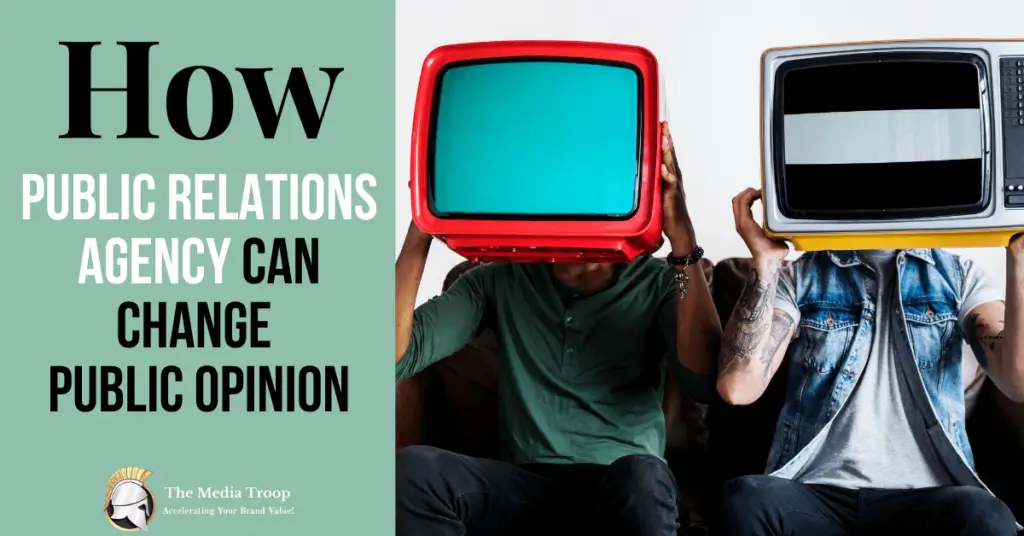
What is an OPINION?
An opinion is a pre-conceived idea or judgement about something or someone which is not conclusive.
But how does an opinion or particularly, opinions affect the public relations of a particular company or the whole industry?
Just imagine if a particular opinion about something or some brand gets into the mind of the massive crowd which are possibly the potential customers of the respective brand, how negatively or positively will it affect the goodwill/reputation of the brand/company.
During the past decade and even before that, huge or medium sized enterprises used to hire highly expensive public relations’ firms so that people have a good image or opinion on their brand. But, what do the people working at these PR agencies do exactly for the brand to have a good public image among the common people/potential and the target audiences?
To answer the aforementioned question, here’s how the PR agencies change the opinion of the common crowd thereby promote/demote the brand:
- THEY ANALYSE.
Any PR agency, be it the most expensive one or the least, will first and foremostly analyse the reputation of any brand among the public. They will try to know how loyal its customers are and will try to gain attention of maximum potential customers via advertisements, websites, campaigns and social media. A quality public relations strategy is outlined in a plan that includes a market and target audience analysis.
- THEY REPORT.
After analysing, the next step for PR firms is to report the problems of any product of any brand in the market to their respective clients or the marketing sector of the brand. By doing this, they make sure that the problems are uprooted which further enhances the quality of services provided by the brand to its customers. This, in turn strengthens the brand loyalty. Loyal customers are always good at maintaining public relations, aren’t they?
- THEY PROMOTE.
The prime objective of PR agencies is to promote the brand. Aren’t the brands or companies who pay hefty amounts to these firms, their clients?
The PR agencies promote the brand to CHANGE the opinion, ESTABLISH and MAINTAIN the public relations of a brand. They advertise a lot on social media. The execution of a customized public relations strategy is an essential investment toward the achievement of long-term business goals. By providing opportunities for businesses and organizations to engage with target audiences via the news media and community events, public relations practices deliver results that achieve top-of-mind awareness among consumers. This leads to brand credibility and reputation-building that consumers view as earned – securing brand loyalty that is unsurpassed by the sole purchase of ad spots. By doing this they change the opinion of the public.
- THEY WRITE.
Any PR agency will definitely write about the brands. They educate the public about the brand. They let the world know what famous faces think about the brand and their product. When the common people read the blogs and articles on the same, their opinion changes about the PR strategy of the company.
- THEY RESPOND.
Who doesn’t love getting replies regarding the product and its experiences personally?
Having a good PR agency by your side is similar to having an almost, close-to customer care service. PR agents respond to the negative comments and promote the boon side of the product.
By doing this, the public relations of a company strengthens.
PUBLIC RELATIONS are hard to maintain but with the right strategy and hardwork, one can establish it without or much less hindrances. It is important for a brand to have good public relations and get public opinions for smooth working of the brand in the highly competitive market. It is essential for the brand to sort out the queries of their customers, have positive review of the current customers and strong brand loyalty. Thus, for any brand, the public relations agencies work hard to change the public opinions and bring them onto the positive side of the story.
LinkedIn: A Gold Mine for Social Media Marketers
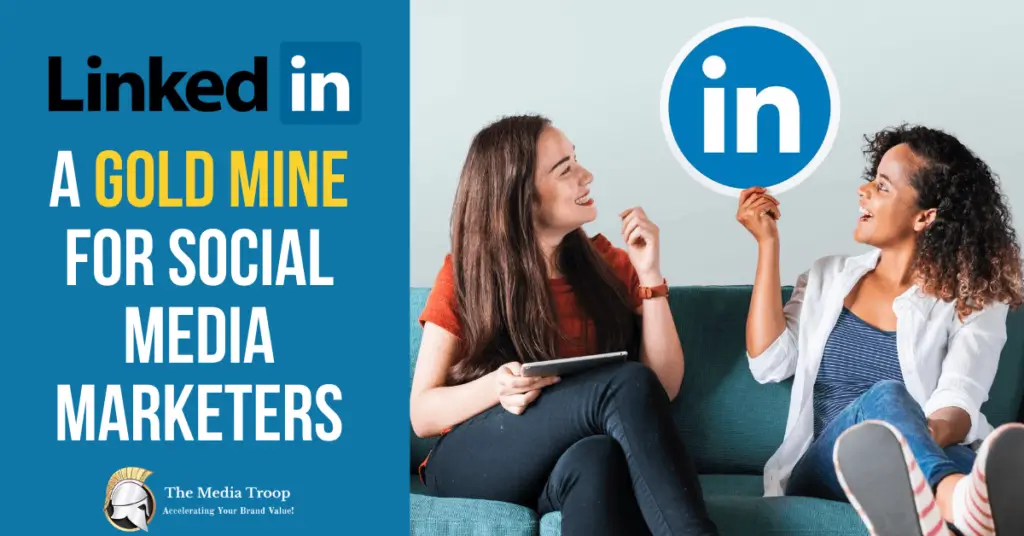
LinkedIn is a very good tool for connecting with potential clients and business people. LinkedIn, at its core is a professional social network.
It’s all about career development, professional connections and other types of business related activities. You cannot just post anything and everything you want, people on LinkedIn are professionals who are there for business.
Many people assume that LinkedIn is just for professionals and job seekers. This certainly is not true. Millions of professionals use LinkedIn to grow their networks and careers, but did you know you can use LinkedIn for social media marketing?
Here are few guidelines you can refer to before starting social media marketing on LinkedIn and know how to use LinkedIn for business marketing.

Create an Optimized Company Page
To begin with LinkedIn marketing, the first step is to create a company page.
Your profile is a great opportunity to impress.
LinkedIn company page strategy– your page should provide opportunities to your customers to know about your brand.
What is in there for them, what purpose will it serve to them are the basic questions that your page should provide answers to.
Keep optimizing your profile; update about your latest achievements, skills and examples of your latest work.
Upload an image that showcases your brand. Create a ‘About Us’ section that encapsulate about your brand. Put your website link to grab attention of the people.
Share your physical location as well; this will help your potential clients to know you better. It also helps you to stay connected to the businesses in your area. Local referrals are a good way to show trustworthiness to the greater audience.
Publish Engaging and Actionable Content
Content Marketing is absolutely essential on any social media platform. The type of content that you post defines the degree of progress that you will get in LinkedIn social media marketing.\
Multiple post everyday will help you reach and engage with your audience.
LinkedIn is a text heavy environment; images can actually provide you sufficient traffic to make your post famous. LinkedIn posting strategy– your content should provide an insight on how to solve a problem and then establish you as a thought leader.
How engage people on LinkedIn? Use of trending hashtags will help you attract audience. Create catchy headlines and upload eye-catching images to grab attention of your target audience.
In fact videos get higher number of views in comparison to images. Just looking at a picture no one can sense the usability of the product but a quick sneak peak can generate interest among audience. This will make your product famous and people will be anxiously waiting for it.
Going live on LinkedIn can also promote huge audience participation as it gives live insight on your product and business. Live videos generate more comments than a regular shot video.
Make sure to post relevant content which not only presents your product but also talk about it. Avoid hard selling and try not to sound too ‘salesy’.
Engage with Your Audience
Expand your networks, which will present you before your potential clients. Post content that are fruitful.
You can always ask your connections to post or promote your product on their pages as well.

Your post will drive customers to action, which means you should be ready to provide them with answers to all their queries.
Your content will derive questions from your audience and you should be able to satisfy them. Customers should not be kept waiting as they will lose their interest in your business. Answer them sooner rather than later.
InMail is a customized way for you to connect with people who aren’t already in your ‘network’. With InMail, your personalized message is sent directly to a target individual’s LinkedIn inbox. Like every other social media platform, engaging with others is a key component to success.
Join and Create Groups
If you have a question- How to use LinkedIn to promote your business? You can also grow your network by joining an industry group and participating in them. This will let people know that you are an active person and have business knowledge.

To enhance your LinkedIn business, you can also start a group and indulge in knowing your audience. Share your knowledge and expertise to gain customer trust which will help you improve your business tactics.
LinkedIn business works on the prospect of fresh ideas. These groups enable you to share knowledge, spread awareness and build authority among the group members.
These groups will inform you about how people think and what they demand from the product. This will provide you with opportunity to know your customers better.
- Create LinkedIn ad Campaigns
Think about LinkedIn marketing strategy. Expand your network and cultivate a professional reputation for your business.
Reach your marketing goals with more ad options. You can also use paid advertisements to get your business in front of the potential clients. You can use sponsored content to boost your content in your audience’s feed and you will see the benefits of using LinkedIn for business.
Recommendations
Try to get recommendations and endorsements from other already existing companies as they provide you with opportunities to reach out to vast audience.
Look for updates where people recommend others. Try to get in contact with them, get your network connected and establish a bond so that they might help you to get the required name.
Follow LinkedIn Marketing Blog
LinkedIn marketing blog is a custom curated selection of articles specially designed to improve your LinkedIn marketing.
You can go there for advice and implement new ideas that boost your presentation and guide you towards LinkedIn business marketing.
Conclusion
Building and nurturing your professional network should be something you are always working on. Having a large network can open doors for you that would otherwise remain locked.
How to use LinkedIn for business marketing– Knowing the right people and fostering your relationships with them can bring amazing opportunities.
Follow these guidelines and you will surely be able to see benefits of LinkedIn marketing in your business.
Top 20 Instagram marketing tips and tricks for your business
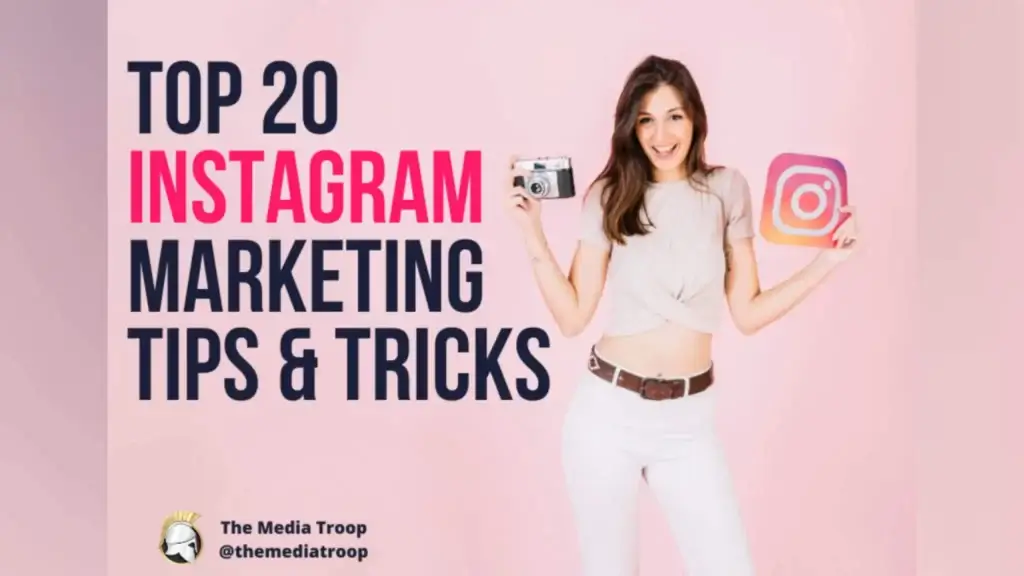
haring app to a marketing tool for businesses and entrepreneurs alike. And with the right Instagram marketing tips for business, marketers can use it as a major platform to effectively reach the right audience and establish a positive brand reputation. Here are some of the Instagram stats that are essential for Instagram marketers:
Now while Instagram is a marketing haven for the brands but the main challenge in Instagram marketing is that whatever you post, it has to attract as many as target audiences within a short period of time. With nearly 4.2 billion posts being posted daily, the average life span of an Instagram post becomes very less.
In order to plan a successful Instagram marketing strategy, here are a few tip and tricks that can help you attract a huge base of followers in a short period of time and drive traffic to your site :
- Building a business account
It is always good to have a separate account for your business. Instagram marketing for small businesses can become quite tedious if their Instagram account has personal pictures and videos. This can derail the marketing strategy as your audience is interested in knowing more about your product rather than your personal life.
- Create current, creative, and useful content
Instagram is a great platform for marketing if your target audience is between the age of 18 and 49. Being creative your post can boost your Instagram marketing in an effective way. A recent study has described Instagram as study describe Instagram as current (42%), creative (37%), and useful (32%).

Captions, Captions, Captions!
Best Instagram marketers know the importance of eye capturing captions. One can always pose questions to attract the curiosity of the audience. One can always go for long captions, unlike the general recommendation that the Instagram caption is to be kept short.
Using Proper Hashtags
Another important marketing tip for Instagram is the use of proper hashtags. Hashtags help marketers to link the post with similar threads which in turn attract a wider base of audience. Try to find niche-specific hashtags. They increase your chances of attracting the target audience to your content.

Contests and Quizzes
Everybody loves to win! Contest and Quizzes can be a great Instagram strategy for business can attract a plethora of audience and creating a hype about the brand or product. Try creating a series of posts for the contests, also posting the pictures of the giveaways for the contests.

Using URLs in your videos
Including URLs in your posts or at the end of the videos so that they can help your audience to your websites or other social media platforms such as Youtube, FB etc.
Collaborating with Influencers
Companies can always collaborate with the influencers for their marketing campaigns. Instagram marketing for influencers is quite easy as they already have their huge base of followers and they can promote brands among them which can, in turn, result in huge sale turnovers.

Sharing customer’s feedback
Instead of just promoting or highlighting the benefits of the product, let your customers vouch for you.
You can post testimonials, reviews, stories, videos about your products on Instagram. Customer testimonials show off how others have benefited from your products, and serve as a powerful tool for using Instagram for marketing your brand and make potential customers take action.
Use of creative teaser campaigning
Creating an air of curiosity before launching your product can stimulate your target audience and make your Instagram marketing campaign more effective. Offering exclusive content to your loyal followers, posting teaser photos, product teaser videos or using Instagram stories are some of the effective strategies.

Partnering with other brands
Partnering with other brands can help you reach your target audience, get more followers and build strong relationships with other brands. Try creating joint Instagram marketing campaigns with relevant brands. You can run a contest, giveaway, or create a promotional offer together to generate sales from your partnership.
Cross-promotion of Instagram posts
Promote your Instagram posts on other social media networks (Facebook, Twitter, LinkedIn, etc.), and invite your fans to follow you on Instagram. You can use different ways to cross-promote. For example, you can post your video content on Facebook or Linkedin or share your Instagram contests on relevant social networks.
Engage through Instagram Live
Instagram Live is a unique method for an Instagram marketer to connect with their followers on a more personal level. Be it product launches, Q&As, or influencer takeovers, make sure to announce your live broadcast well in advance.

When to post on Instagram!
Rather than posting anytime, the right Instagram branding strategy is to post at the crucial times when your followers are active online. A recent survey proved that the best time to post on Instagram is between 7 to 9 pm. Apps like Iconograph or Buffer can help you find the best time to post by using your Instagram data.
Investing in Instagram Ads
Although Instagram ensures your post to reach most of your target users organically, companies can invest in Instagram ads as an Instagram strategy to make sure that you can reach 100% of your targeted active users. People who don’t follow you can see your ads and probably find interest in your message.

Telling stories on Instagram
Telling stories on Instagram can be an essential part of an Instagram marketing plan. This feature can be used to increase their Instagram marketing growth. One can string several pictures/videos on Instagram stories together to tell a narrative.

Monitoring the metrics
In order to ensure the success of Instagram marketing, keeping a track of right metrics (follower growth, likes, comments, top posts, the number of clicks to your URL, posts, etc.) is very important. Based on the results, you can figure out what works best for you and have more clarity and can be used to monitor the competitors and adopt new methods.
Giving discounts to loyal followers
This Instagram marketing tip is a sure-shot way to attract attention to the brand and gain followers. One can create a landing page or popup for the site that gets users to give their email address and provides an entry action that provides them credits for following you on Instagram.
Consistency trumps quantity of posts
One should post 1-2 posts at a defined interval of time. This way the feed stays fresh and relevant, and one can have more opportunities to attract an audience with the content. Also, consistency can ensure a clear and organized way for marketing strategy on Instagram.
Using a content calendar
Tools like Google Calendar or Trello is a great way to organize your Instagram posts and manage your overall content strategy. The calendar helps you track performance and plan for future posts on Instagram and improve efficiency.
By following these best Instagram strategies, you can maximize your Instagram channel’s potential. It doesn’t matter how the network evolves, you can increase Instagram engagement while keeping those likes, shares and comments coming.
How To Improve Public Relations Results with Social Media

Public image is a key aspect that forms almost 63% of the company’s value in the market. Hence it is of utmost importance to invest in good public relations strategies to maintain a positive image of the brand. It is after all about sending the right message to the consumers which increases the brand credibility of the company.
Public relations (PR) is a powerful tool that can be used in many effective ways. It has come a far way long from a traditional approach such as print media to a modern mode such as social media. And with widespread outreach of the internet makes social media the perfect partner for public relations. The best PR agency can provide you the complete strategy for your brand.
ROLE OF SOCIAL MEDIA IN PUBLIC RELATIONS
Over the last few years, social media has become a huge part of people’s life. Its extensive use has radically changed the way people communicate and share information. Its impact has not only affected the people, but also the brands as they try to engage their audiences and win their loyalty.
Public relations is akin to social media as professionals constantly seek out to communicate and influence the consumers where social media can play a huge role in becoming an integral part of their public relations process while they also offer social management services as well.
WAYS HOW SOCIAL MEDIA IS CHANGING PUBLIC RELATIONS
On average, consumers spend 2.5 hours on social sites every day which shows how much of an impact social media has on the PR industry. Here are some of the essential strategies that can help public media enjoys the benefits of social media:
- New Tech trends such as VR (virtual reality) which can change the game in terms of digital storytelling. Idaho Commerce used VR at a Select USA Summit, which draws around 3,000 organizations. They used VR, which allowed people to visit Idaho’s trade show booth to visit the state’s milestone locales. This allowed potential investors to understand what the state brought to the table becoming one of the most featured stalls at the event.
- Facebook, Instagram, Twitter, YouTube, and other social media channels have transformed the form of communication between companies and the public. In the era of instant Twitter and Instagram feedback, companies now have customer service representatives answering questions in real-time via social media.
- Social media has allowed an average person to create their own platform and cultivate their own followers which shows that niche-influencers have major sway in the future of PR.
- In these tempestuous times, one can rely on Twitter to get the latest news. PR agencies and experts are now investing less energy covering news to a wide net of journalists but concentrating on a very focused media outreach and relationship building.
HOW CAN SOCIAL MEDIA HELP PUBLIC RELATIONS
Social media as a part of PR campaigns can play a dynamic role as a social channel can widely promote a company’s image, help to create a loyal customer base while developing useful connections with influencers and media professionals so that one can stay ahead in case of a crisis.
Some of the ways how social media can help are:
- Social media can help in improving the public awareness of the company through blogging, posts, and online mentions spreading the word about your company. The more readers it attracts, the higher number of followers will be gained which increases the reach of communications.
- Incorporating social sharing links and buttons to press releases which makes it easier to distribute the information to a wider audience with a click of a button.
- Strong content with relevant SEO and links to well-known and established domains can result in increased traffic and in turn potentially improving the search rankings.
- Hashtags have emerged as a key tool in a public relations campaign. A tag can help in connecting with different lines of communication around the world, making it easier for professionals to keep track of what is being said about the company or brand.
- Social networking sites allow you to have a substantial consumer base by allowing them to ask questions or posting their thoughts. Using these channels, one can keep the readers engaged and allows companies to know what people are talking about their brand keeping them ready to dispel bad “word of mouth” incase.
Social media is constantly changing the arena of public relations with its upcoming trends and innovations making way for PR professionals and PR agencies to implement social media in their public relations strategies.


